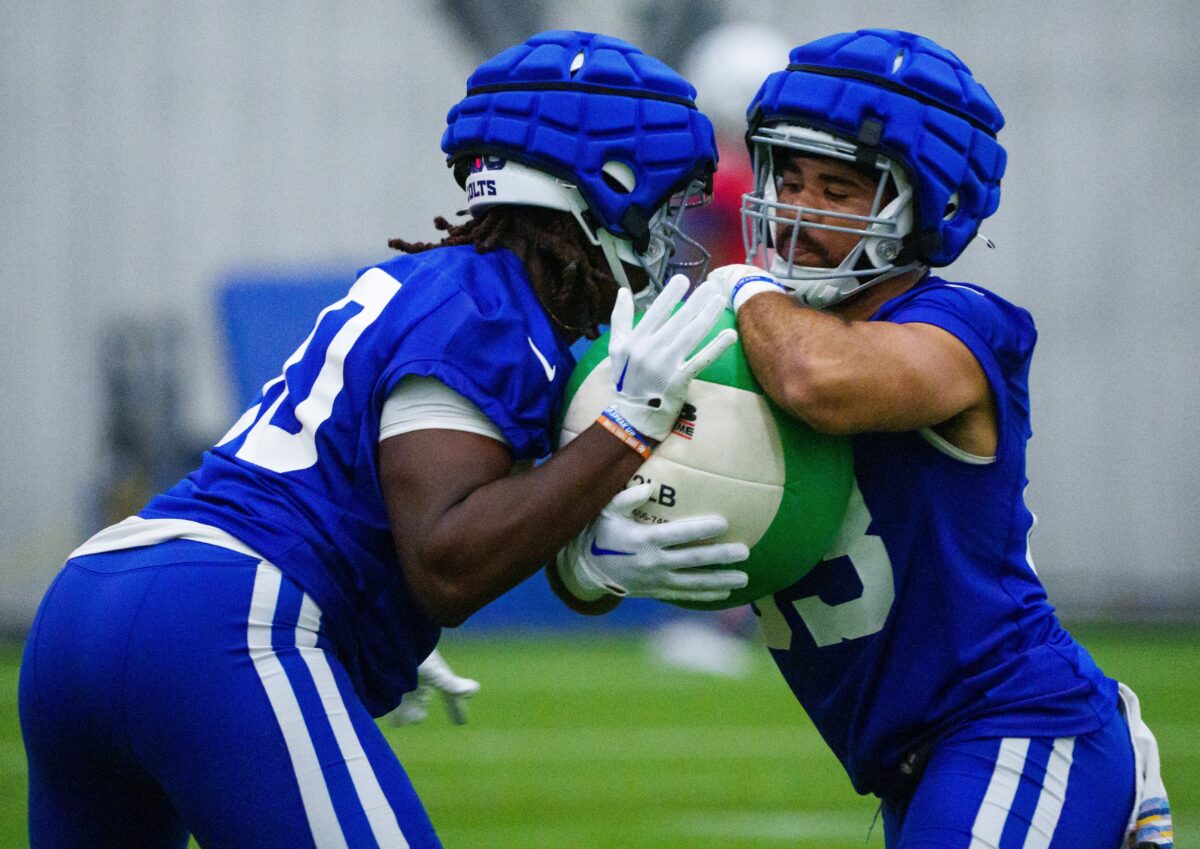The Indianapolis Colts may not have a “superstar” at the tight end position, but general manager Chris Ballard does like the depth of the group and the variety of skill sets in the room as well.
“So they’re all viable,” said Ballard of the tight end room. “I mean, they all got a little–do we have a, per se, superstar in the group? Probably not. Do we have really good players at the group? Yeah.”
Coming into training camp, the Colts have seven tight ends on the roster, and Ballard believes just about all of them have a path to contributing to this year’s team.
“I mean, Mo Alie’s got a role,” added Ballard. “(Drew) Ogletree’s got a role. (Kyle) Granson’s got a little bit of a role. Mallory, we think is going to do some really good things. We got to see Jelani.
“Then you got (Eric) Tomlinson, who’s played in this league and is a good Y-blocking tight end. So I think that’ll work itself out over time.”
The strength of this Colts’ tight end unit is the number of different roles that, collectively, this unit can fill.
Alie-Cox and Ogletree are often asked to block, but both, particularly Ogletree, have the versatility to play from the slot, and can be big targets in the passing game for Anthony Richardson when needed.
As Ballard mentions, Tomlinson fills the traditional in-line Y-tight end role, while Woods can add a big play presence to the passing game, especially over the middle in Shane Steichen’s RPO-heavy offense. It is his goal this summer to his spot as a pivotal member of the offense.
“Jelani showed some really good things as a rookie and then was hurt all last year,” said Ballard. “He’s got to stay healthy and let’s see what he’s got.”
Then Granson and Mallory fit the do-it-all move tight end mold, with either being able to handle just about any role within the offense.
Having a diverse group of skill sets at this position will allow Steichen to be really game-plan specific in how he utilizes the tight end room. From week-to-week, to a degree, playing time could be determined by who the opponent is and what the offense needs to be successful.
Last season, 12 personnel–or two tight end packages–was the second-most utilized personnel grouping by the Colts.
“I think with Shane and our offensive staff, they’re going to play to the strengths,” Ballard said. “So like, if those guys end up being, have to be on the field in 12, 13 personnel every once in a while, then he’ll do it.
“He’ll do whatever he thinks and adjust however we have to win. But I do think it’s a good group. Might not be a superstar, but it’s a good group.”
The challenge potentially, or as Ballard put it–a good problem to have–will be determining how many of these players make the initial 53-man roster. Going heavy and keeping five tight ends means going light at another position group, and although Ballard mentioned six of the tight ends being able to have a role, rostering that many seems unrealistic as well.
An added wrinkle in this is Alie-Cox’s contract. He is in the final year of his deal and has no guaranteed dollars left. If the Colts were to release him, they would save $5.9 million in cap space.
“That’s a good problem,” said Ballard about the number of potential contributors at tight end the Colts have. “I mean, I’d rather have–I’d rather us be talking about having five or six viable players at a position than going we don’t have but one viable player at a position. So that’s not a bad thing.”
Ultimately, all of these questions will be answer in the next several weeks as training camp and the preseason unfolds. While this position group may be lacking star power, as a collective unit, there is a lot the Colts’ tight ends can offer the offense this season.
